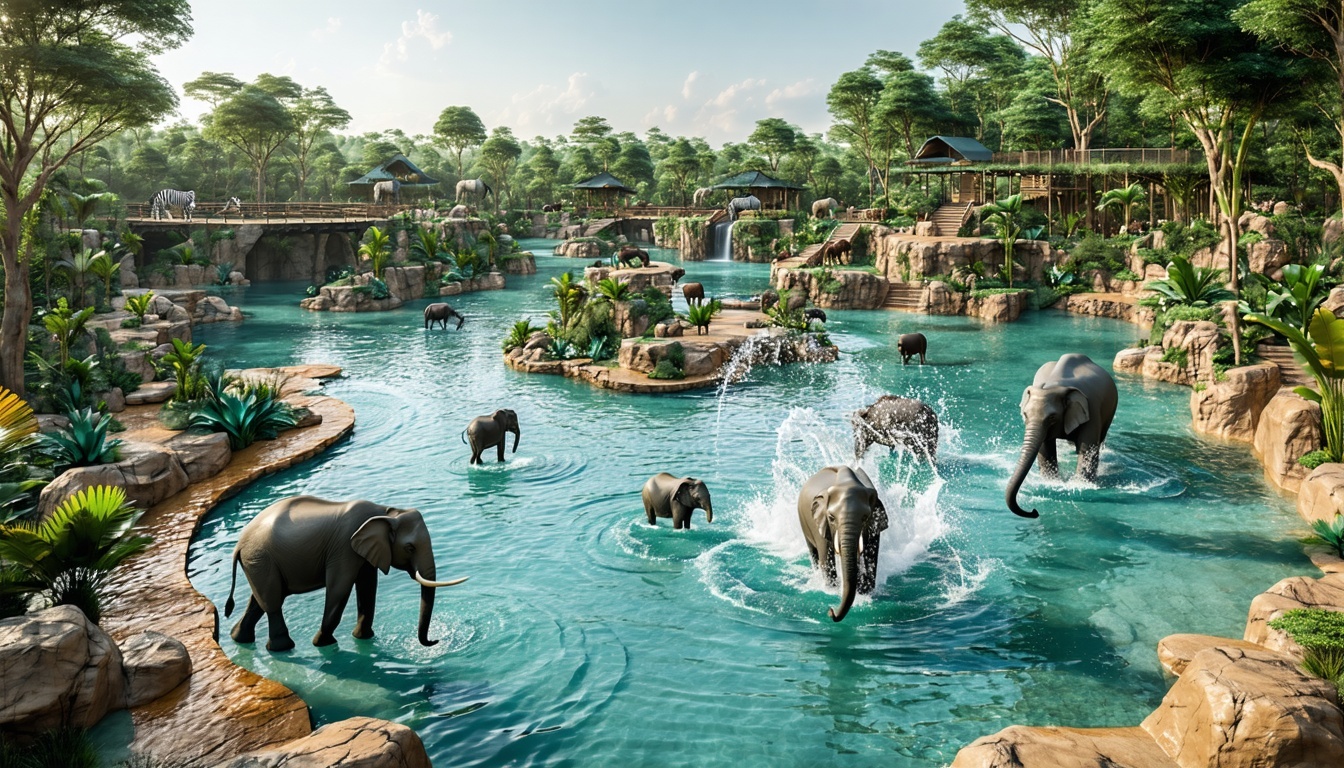Not Just a Habitat—A Home

Designing a wildlife habitat isn't just about cages and landscaping. It’s about engineering nature—creating an environment where animals can behave naturally, thrive physically, and remain safe, all while meeting zoo safety standards, sustainability goals, and public expectations.
Water features play a central role in these habitats. Whether it’s a moat around a lion’s den, a wetland for waterfowl, or a splash pool for elephants, the challenge is the same: contain the water safely, affordably, and durably—without compromising the animals or the land.
That’s why more zoos and wildlife sanctuaries are turning to HDPE (High-Density Polyethylene) liners as their go-to solution for large-scale waterproofing.
🐾 Why Water Features Matter in Animal Enclosures
In the wild, animals have constant access to streams, ponds, rivers, and natural depressions. Replicating those features in a zoo or sanctuary:
-
Improves animal health and hydration
-
Encourages natural behaviors (bathing, foraging, wallowing)
-
Provides temperature control for warm-climate animals
-
Enhances enrichment and play
-
Acts as a barrier alternative (like moats instead of fences)
-
Adds to the aesthetic and educational value for visitors
But building permanent, naturalistic water features requires waterproofing that can handle:
-
Claw strikes
-
Hoof pressure
-
Animal waste
-
Plant and root growth
-
UV exposure
-
Extreme temperatures
And that’s where HDPE liners outperform.
🛡️ What Makes HDPE Liners Ideal for Zoos?
HDPE liners are flexible, impermeable plastic membranes that have long been used in demanding industries like mining, agriculture, and waste containment. Their application in zoological and wildlife settings is growing—and for good reason.
✅ 1. Durability Under Pressure
HDPE liners are available in thicknesses up to 100 mil—tough enough to withstand:
-
Elephants walking across it
-
Tigers’ claws during play
-
Constant abrasion from sand, soil, or gravel
They resist tearing, punctures, and stretching—meaning less need for repairs or replacement.
✅ 2. Animal-Safe Materials
HDPE is:
-
Inert and chemically stable
-
Non-toxic (no off-gassing or chemical leaching)
-
Used in food-safe and medical applications
This makes it safe for animals to touch, lie on, splash in, and even drink from when used in water features.
✅ 3. Flexible Design
HDPE can be:
-
Cut to size or fabricated to fit custom habitat shapes
-
Seamed and welded for large, irregular installations
-
Installed vertically or horizontally, even on slopes
Whether you’re building a lazy river or a shallow wetland, HDPE conforms to the environment you need to mimic.
🌎 HDPE vs. Concrete, Clay, and Pond Liners
| Feature | HDPE Liner | Concrete | EPDM/Vinyl Pond Liner |
|---|---|---|---|
| Durability | 20–50+ years | Can crack & degrade | 5–10 years |
| Animal-safe | ✅ Yes | Can leach lime | Varies (may off-gas) |
| Flexible for terrain | ✅ Yes | No | Limited |
| Repairable | ✅ Easy patching | Costly | Difficult |
| Cost-effective | ✅ High | High | Moderate |
Concrete often cracks under pressure and temperature changes. Clay liners are porous and vulnerable to burrowing animals. EPDM and vinyl liners degrade quickly in sunlight or heavy-use areas.
HDPE combines flexibility with industrial-grade performance, making it the best of both worlds.
🦒 Real-World Examples from Zoos and Sanctuaries
📍 Case Study: Safari Animal Park – Central California
This privately-run wildlife park needed a natural-looking moat to separate zebras and giraffes from public pathways. They chose 60 mil HDPE liner for its strength and flexibility.
“We wanted a solution that wouldn’t tear, even with hooves pounding near the water daily. It’s held up beautifully—three years strong.”
— Park Manager
📍 Case Study: Riverfront Zoo – Southeast U.S.
To reduce fencing in their big cat enclosures, the zoo used HDPE-lined moats with recirculating water systems.
“HDPE gave us a safe, invisible barrier. Visitors love the view, and the cats have their own stream to cool off in.”
— Habitat Designer
📍 Case Study: Wildwood Animal Rescue
The sanctuary repurposed an old livestock pen into a wetland pond for ducks and turtles using textured HDPE. Volunteers installed it with simple trenching and weights.
“It was a weekend job with a huge impact. It changed the entire feel of the rescue space—and our maintenance dropped drastically.”
— Director of Wildlife Care
🛠️ Installation Tips for Wildlife Applications
Installing HDPE liners in animal habitats requires special considerations:
📐 Design for Depth & Access
-
Ensure slopes are gentle for animals to enter/exit water
-
Avoid vertical drops or sharp corners
-
Use berms and boulders to protect liner edges
🧱 Layering for Realism
-
Add sand, gravel, or soft soil above liner
-
Use rocks, driftwood, and aquatic plants for enrichment
-
Anchor with safe edging (concrete collars or trenching)
🔧 Seam Welding
-
Large installations should use heat-welded seams for a seamless waterproof layer
-
Use professional installers or factory-fabricated panels for complex shapes
🚰 Drainage & Filtration
-
Include overflow systems or pumps to manage standing water
-
Pair with biofiltration zones to keep water clean naturally
♻️ Long-Term Benefits & Maintenance
✅ Low Maintenance
-
No cracks to patch (as with concrete)
-
Easy to clean with water or gentle disinfectants
-
Resistant to mold, algae, and mineral buildup
✅ Eco-Friendly
-
Reduces water waste through leak prevention
-
Recyclable at end of life
-
Supports sustainable habitat design
✅ Cost-Efficient
-
Lower upfront cost than reinforced concrete
-
Lasts 20–50 years, minimizing replacement frequency
-
Easy to repair if damaged
🧠 Final Thoughts: Mimic Nature. Control Water. Protect Wildlife.
In wildlife care, every detail matters—from the terrain under a tiger’s paw to the water in a flamingo’s pond. HDPE liners empower zoos, parks, and sanctuaries to build water-rich habitats that are both functional and beautiful.
More than just waterproofing, HDPE offers:
-
Safety for the animals
-
Reliability for the staff
-
Peace of mind for the planet
It’s tough enough for elephants, but smart enough for your facility.


